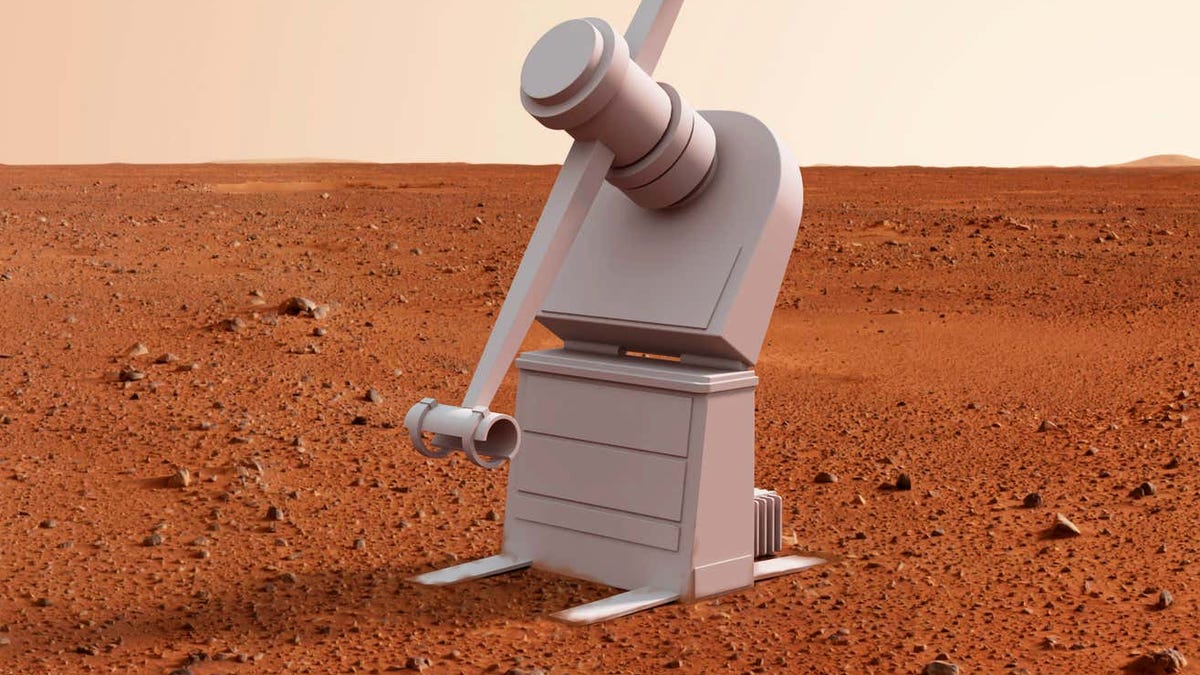A small non-profit organization called Aerospace Corporation has come up with a very interesting meteor deflection system. Instead of trying to deflect them using a kinetic impact like in the DART mission, what they propose is to use their own centrifugal force to destroy them.
The idea sounds strange, but it might work. It all started when Nahum Melamed, the project leader behind the aerospace corporation, visited the launch pad. SpinLaunch. As you may recall, SpinLaunch is testing an auxiliary acceleration system to put payloads into orbit without the need for fuel. The system was able to launch a payload for NASA October 2022.
“How can I use this same system to deflect an asteroid,” wondered Melamed during a talk at the SpinLaunch facility. The answer to that question is a kind of pocket version of an accelerator used to put payloads into orbit.
The idea is to send one of these machines to meet a dangerous asteroid. Once there, the engine will attach itself to its surface and begin sending small amounts of regolith, dust and rocks from the asteroid’s base into space. Each of these scoops contains only a few kilograms of material, but the system is designed to run continuously on a small amount of electrical power, so over a long period of time it can move enough material to change the asteroid’s course. “The recoil from launching things into space can cause a little disruption,” Melamed explains to Gizmodo. “Over time, weeks or months, the force of that recoil can deflect the asteroid.”
When it comes to protecting Earth from cosmic threats, it certainly doesn’t hurt to have more options. “It’s great to keep thinking about new ways to deflect asteroids,” Seth Jacobson, an assistant professor of planetary science at Michigan State University, told Gizmodo. “This approach is like turning regolith from an asteroid into a kind of rocket fuel and it’s very creative.”
The aerospace corporation’s goal is to test its catapult prototype on Earth within two years. If it works, the next step is to test it on the moon and design a system that can send it to an asteroid. There is also a commercial side to this effort, as asteroid material launched into space can be collected for commercial use in a variant of asteroid mining.
NASA has not found any dangerous asteroids.Dangerous for the next 100 years, but that doesn’t mean they can’t go undetected. AndIn February 2023, an asteroid the size of a house tore through the atmosphere and exploded over Chelyabinsk, Russia. The shock wave broke the windows of hundreds of houses and injured more than a thousand people. The Chelyabinsk meteorite is not very large (19 meters), but it is a good example of how much trouble even small meteorites can cause. That’s why meteorites like the one in Chelyabinsk are precisely the goal of the space agency..
Of course, the path to this idea is fraught with challenges, some of which are quite complex. To begin with, like small but dangerous meteors Chelyabinsk There are Very difficult to detect On time, and the machine you propose Aerospace Corporation needs precision Asteroid deflection time. And then there are the technical difficulties of landing on an asteroid. However, it never hurts to try new ideas.




